Regular readers here know I’m a big fan of street art. And when I find good stuff, I share it. In particular the work of Tracy Lee Stum have blown my mind of late – pushing the boundaries of what can be done with perspective and chalk, creating innovative new ways to expand the medium. Where most people see a piece of chalk and a stretch of sidewalk, Tracy sees yawning chasms, hidden underground cities, mythological creatures and ancient gods. To Tracy, it’s all a matter of perspective. That’s why I caught up with her in an interview below.
Anamorphic art (distorted perspective which requires the viewer to occupy a specific vantage point) is as old as the Renaissance. This new stuff from artists like Tracy borrows from that era and overlays a new urban canvas — pieces taking as “little” as 4 hours, or as long as four or more days. Nevermind that sometimes weather conditions will destroy a piece before it’s even finished.
CJ: At this point in your career, you have made art in many different countries. Is there anywhere you specifically like to work?
TS: Good question! I like working wherever I have an adequate surface, good weather (no rain) and a crowd. Certainly big cities are terrific for these works but I am also keen to travel to more 3rd world countries to introduce the art form to communities there. Art inspires and oftentimes folks in those areas don’t have access to what the 1st world population has. I’d like to bring my art form to those out of the way places.
CJ: How do you keep your passion for this specific medium alive?
TS: I’ve been doing this for a long time – 14 years! – so I do understand about keeping the passion going for the art form. I personally strive to find new ways of creating innovative images with different approaches to composition and design – a challenge keeps me going! And of course, there is nothing as satisfying as getting to the drawing phase, where color and line and all the methods you employ as an artist come into play. That makes it easy to stay excited about the art. Authenticity is huge for me and I push myself to stay authentic.
CJ: When you conceptualize a piece, do you have a specific scale in mind, or do you wait for the perfect space to create an idea you have?
TS: It’s a combination of these things – I usually have a sketchbook full of concepts (ideas come to me intuitively and I simply jot them down for later reference) and when a project presents itself, I will consider location, actual site, space, size, and interactivity needs. Scaling a painting to work with live participants is a fun challenge for me and one that requires considerable mental contemplation. I spend quite a bit of time going over my image design to make it work the best it can with a particular scale. Some designs demand specific spaces and those come to the foreground when a venue or site is offered that will accommodate them.
CJ: Do you create your pieces completely from your mind’s eye, or do you have a sketch you work off of?
TS: In the past I have typically used a sketch, albeit rough ones, to work from. I’ve also used a camera lens to view the site and imagine a likely image for the space. Lately though, I seem to find that approach somewhat restrictive and prefer to create on the spot. I may rough out an idea and once the properties of a good design are worked out, I forget the sketch and go with impulses I get while working on the actual painting. Often times, and this has been true throughout my career, I begin with one idea and then make significant changes to the design as I am developing it on the street. Again, I receive impulses and follow those absolutely – they always take me to a better result than staying with a rigid framework. I’m fairly fluent in the principles that govern 3d works so I feel fully confident to spontaneously create a design at any given time and place.
Thanks Tracy. More of this badass work found here… http://www.tracyleestum.com/gallery


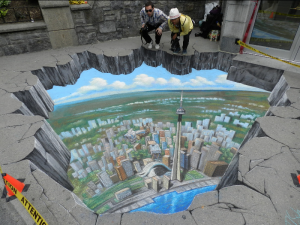
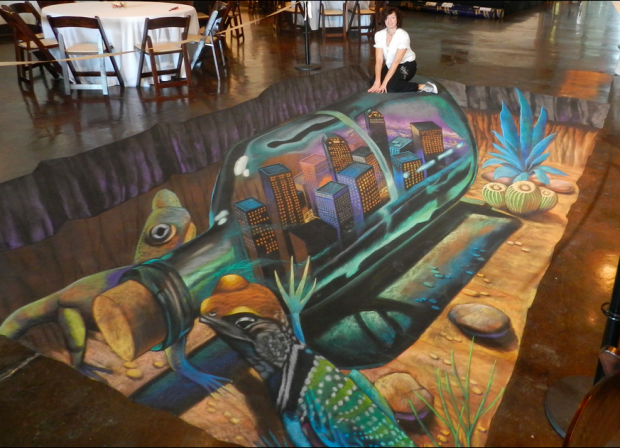
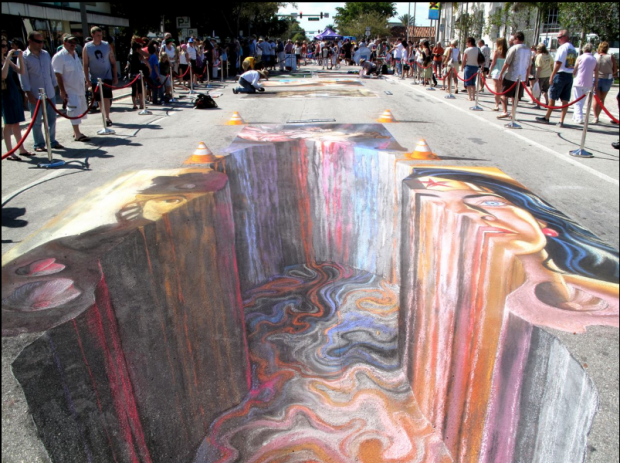
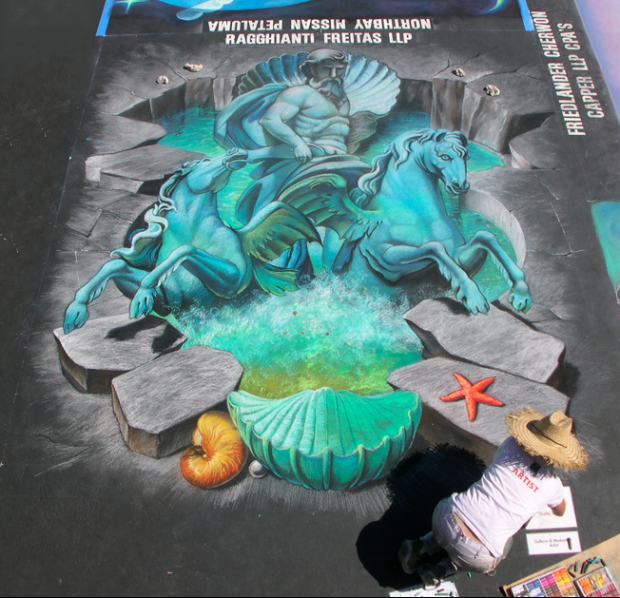
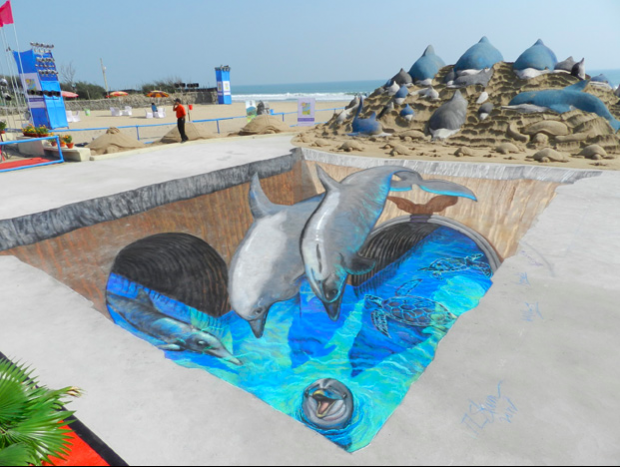
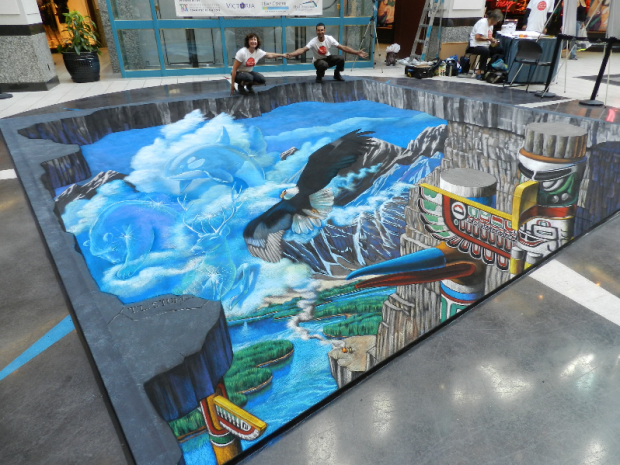
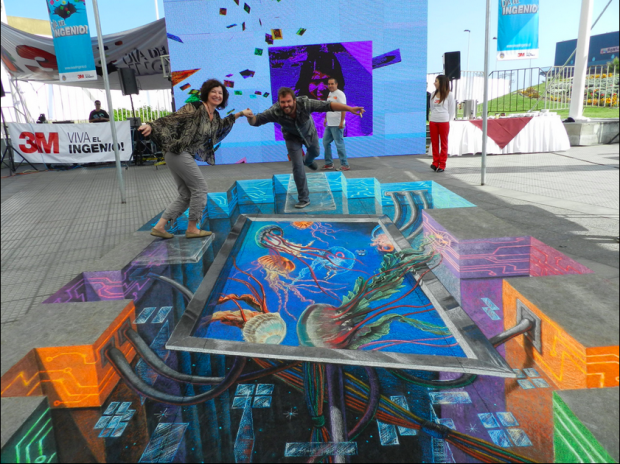
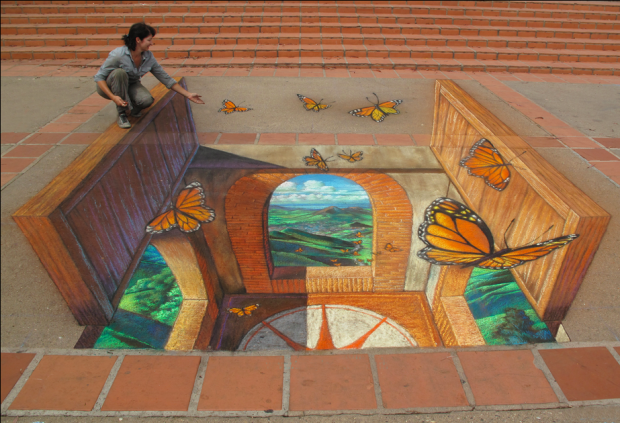
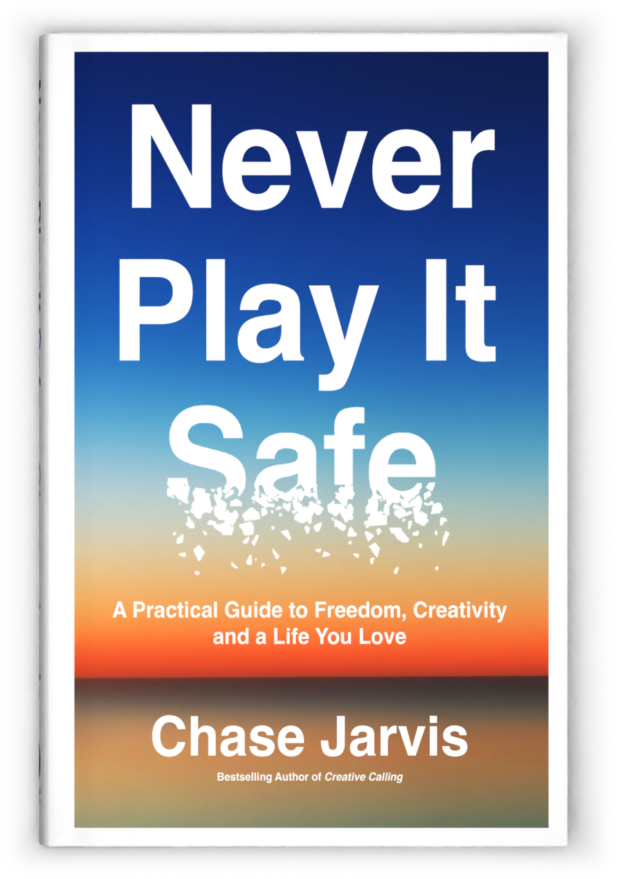















Love these, amazing skill & creativity.
I love, Love LOVE sidewalk art and would love to help share it with the world. While living in rainy Seattle does not allow for that, I have many family and friends in Newport Beach, CA. Little rain, lots of locals and tourists — lots of sidewalks, boardwalks and common areas. A great place for a paid gig, artist in residence or similar program for an artist. I attempted an introduction once before that fell through. Anyone know if/how such arrangements have been done successfully in the USA in the past?
This just completely blows my mind. Your thought that a four day piece of work may be destroyed by rain or the like really makes you stop and think.
Great article and wonderful work
That looks so real.